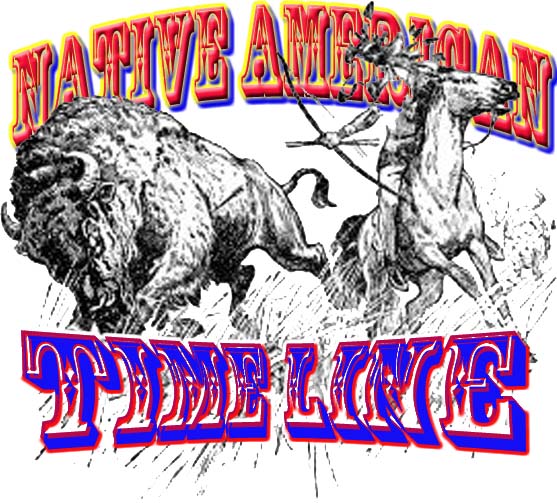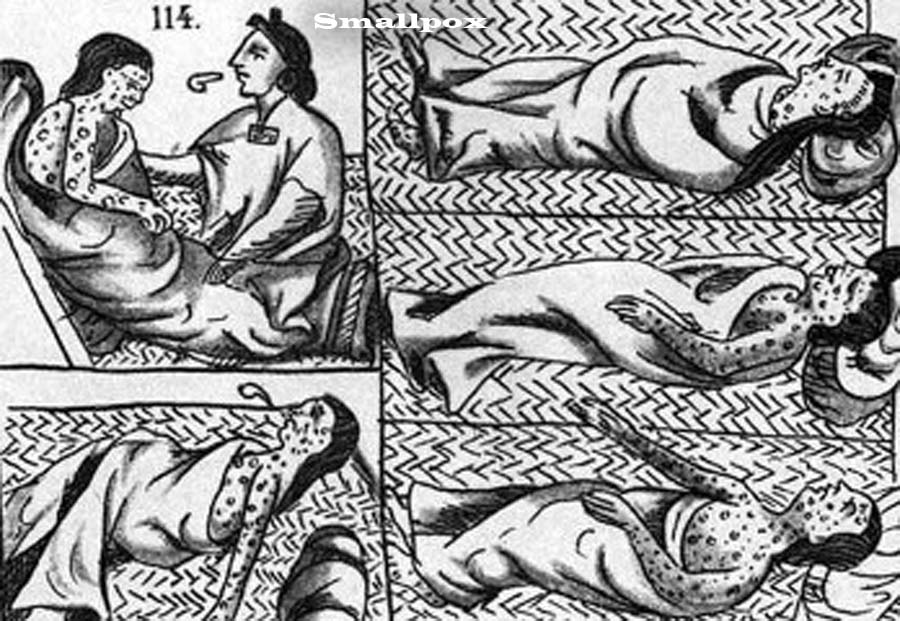1600’s
Europeans of the time held steadfastly to the belief that their introduced diseases were acts of God being done in their behalf. One settler proclaimed while speaking about the deaths of Native Americans, “Their enterprise failed, for it pleased God to effect these Indians with such a deadly sickness, that out of every 1000, over 950 of them had died, and many of them lay rotting above the ground for lack of burial.”
1607
Jamestown is founded in Virginia by the colonists of the London Company. By the end of the year, starvation and disease reduce the original 105 settlers to just 32 survivors.
Captain John Smith is captured by Native American Chief Powhatan and saved from death by the chief’s daughter, Pocahontas.
On July 3, Indians brought maize, beans, squash, and fresh and smoked meat to the Jamestown colony. As at Plymouth years later, the colonists and their diseases would eventually exterminate them.
1609
Samuel de Champlain, accompanied by two other Frenchmen and 60 Algonquin and Huron Indians, defeated a band of Iroquois near the future Ticonderoga, beginning a long period of French/Iroquois hostilities.
1611
Former Dutch lawyer Adrian Block explored Manhattan Island in the ship Tiger. He returned to Europe with a cargo of furs and two kidnapped Indians, whom he named Orson and Valentine.
1614
The Viceroy of Mexico found Spanish Explorer Juan de Onate guilty of atrocities against the Indians of New Mexico. As part of his punishment, he was banned from entering New Mexico again.
1616
A smallpox epidemic decimates the Native American population in New England.
Virginia’s Deputy Governor George Yeardley and a group of men killed 20 – 40 Chickahominy Indians. It was under Yeardley’s leadership that friendly relations between the Chickahominy and the colony ended.
1621
One of the first treaties between colonists and Native Americans is signed as the Plymouth Pilgrims enact a peace pact with the Wampanoag Tribe, with the aid of Squanto, an English speaking Native American.
1622-44
Powhatan Wars – Following an initial period of peaceful relations in Virginia, a twelve year conflict left many natives and colonists dead.
1626
Peter Minuit, a Dutch colonist, buys Manhattan island from Native Americans for 60 guilders (about $24) and names the island New Amsterdam.
1636-37
Pequot War – Taking place in Connecticut and Rhode Island, the death of a colonist eventually led to the destruction of 600-700 natives. The remainder were sold into slavery in Bermuda.
1637
Captains John Mason and John Underhill attacked and burned Pequot forts at Mystic, Connecticut, massacring 600 Indians and starting the Pequot War.
English settlers in New England massacred a Pequot Indian village.
1639
Captain William Pierce of Salem, Massachusetts sailed to the West Indies and exchanged Indian slaves for black slaves.
1675-76
King Philip’s War – Sometimes called Metacom’s War, was an armed conflict between Native American inhabitants of present-day southern New England and English colonists and their Native American allies.
1676
Bacon’s Rebellion – Tobacco planters led by Nathaniel Bacon ask for and are denied permission to attack the Susquehannock Indians, who have been conducting raids on colonists’ settlement. Enraged at Governor Berkeley’s
1680-92The Pueblo Revolt occurs in Arizona and New Mexico, when Pueblo Indians led by Popé, rebelled against the Spanish. They then lived independently for 12 years until the Spanish re-conquered in them in 1692.
1689-97
King William’s War – The first of the French and Indian Wars, this conflict was fought between England, France, and their respective American Indian allies in the colonies of Canada (New France), Acadia, and New England. It was also known as the Second Indian War (the first having been King Philip’s War).
1689-1763
The French and Indian War, a conflict between France and Britain for possession of North America, rages for decades. For various motivations, most Algonquian tribes allied with the French; the Iroquois with the British.
Word count: 621
>>to return to previous page – right click on back arrow <<




















